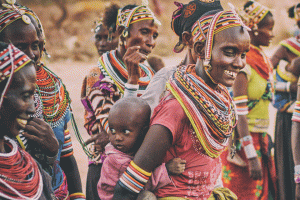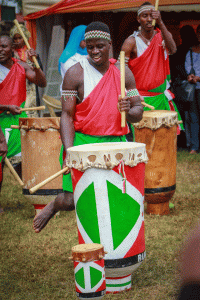Storytelling makes a big difference in people’s real lives. They are used to communicate between cultures and groups of people as well as teach lessons and history. While the storytelling techniques evolve and change the basis and message of the stories themselves are often universal.
In this series, we explore the importance of traditional storytelling across various cultures.
Kenyan culture

The tradition of storytelling in Kenya started a long time ago. Often called ‘orature” in the region, folklore, oral history and storytelling has been handed down from generation to generation by communities passing on their cultural knowledge and heritage.
Stories have been recognised as one of the most powerful means of communication in Kenya, through words, songs, chants, sayings, proverbs, miming and body language.
Kenyan stories—not only myths and legends—teach morals, educate, illustrate, enlighten, inform, persuade, stimulate and inspire. In Kenya, storytelling is integrated into everyday life.
Kenya has three main ethno-linguistic groups: Cushitic, Nilotic and Bantu speakers. There are over 42 different tribes in the country and each tribe has its own myths and legends.
Tales by Moonlight
Traditionally, the adults would gather the children together by moonlight around a village fire and tell stories. These are traditionally called Tales by Moonlight or commonly known as Fireside Tales. Usually, the stories were meant to prepare the young people for life, teaching them a lesson or moral. Stories also explained where the tribe come from and the origins of their laws. Women tell their granddaughters stories that transform “embarrassing” subjects into instructive tales.
In Kenyan folk tales, they have well known animal stories that again vary from tribe to tribe. The animals commonly used are the hare, leopard, snake and lion. These stories reflect the Kenyan culture and the animals are often given human attributes. It’s not uncommon to find animals talking, singing or demonstrating other human characteristics such as greed, jealousy and honesty.
Kenya includes many different groups of people with varied heritages and storytelling is one practice that brings them together. Many groups recount slightly different versions of similar stories as well as telling their own unique tales.
Tradition
The tradition of Kenyan storytelling communicates ideas that drive the listener into the inner world of the imagination and acts as an escape from the real world. This helps Kenyans to share their own understanding of the world through their own language and is a form of personal communication.
The lessons and morals held within the stories help the audience to identify characters and events, touching the cultural heritage and rooting them firmly to the rhythm, beat and movement of who the audience is as a people. The traditional tales build the personality and identify the listener with the Kenyan’s ways of life.
Performance Art is still a valuable means of cultural education. It is widely appreciated in the Kenyan communities and shared widely via different mediums such as orature and film festivals as well as in civic education. The Kenyan education system has incorporated this into its syllabus. It explores the different tales from different tribes from a range of genres and it is examined as part of the national curriculum. In schools, stories teach important lessons about history, society and values. Students regularly share the stories they know with classmates as part of the school curriculum.
Interactive Storytelling Tools
In Kenya, an interactive approach to storytelling is encouraged. This would apply to all audiences but especially effective with children. Storytellers use several creative narrative performance techniques in telling traditional stories to children as they participate more freely and the unfolding of the narrative facilitates a greater understanding of traditional stories.
Some of the interactive approaches include:
Call and Response: They can be selected from traditional singsongs, call/response chants and choruses that children already know or can easily learn. These are used repeatedly to create a participatory atmosphere with the children before the story starts. Most of the time they are accompanied with movements, clapping or playing of musical instruments. Often, they act as a way of creating and maintaining positive participatory energy among children in a group.
Riddling Games: Riddles are found in every community. Children like riddles because it gives them a chance to engage in competitive thinking and find an swers to creatively crafted questions about everyday things. They like creating their own riddles to test each other’s ability to find answers. This makes riddling games a means of sharpening children’s wits, concentration and thought processes.
swers to creatively crafted questions about everyday things. They like creating their own riddles to test each other’s ability to find answers. This makes riddling games a means of sharpening children’s wits, concentration and thought processes.
Shared Singing: Often, traditional tales do have songs within them. A character in the story might sing as a means of sharing information, warning others, celebrating and praising. It’s a good idea to first teach the children the story’s songs because in the course of telling the story the children will find it easy and enjoyable to join the storyteller in singing, as part of the storytelling process. This may take the form of responding to a call or just singing along. In this way, the children become deeply involved in the story as co-tellers or even characters in the story.
Question and Answer Posers: This involves asking the audience to respond to questions as the story is being related. Such questions might be asked to have the audience describe the characters in the story: to say what action they think should take place in the story or try to explain happenings as the story progresses. All these will help to maintain attention, having the audience think through the story and experience it intimately.
Imitation of Situation and Characters: Teach children different sounds that can be imagined in the story. These could be how characters in the story react, cry, roar etc. It might equally be abstract sounds: what sound the wind or the rain makes for example. If taught in advance, the children, can imitate such sounds appropriately in the story as it is being told. This process helps to absorb them thoroughly into the fantasy of the story so that they experience its reality. They will not forget the stories and lessons yielded afterwards.
